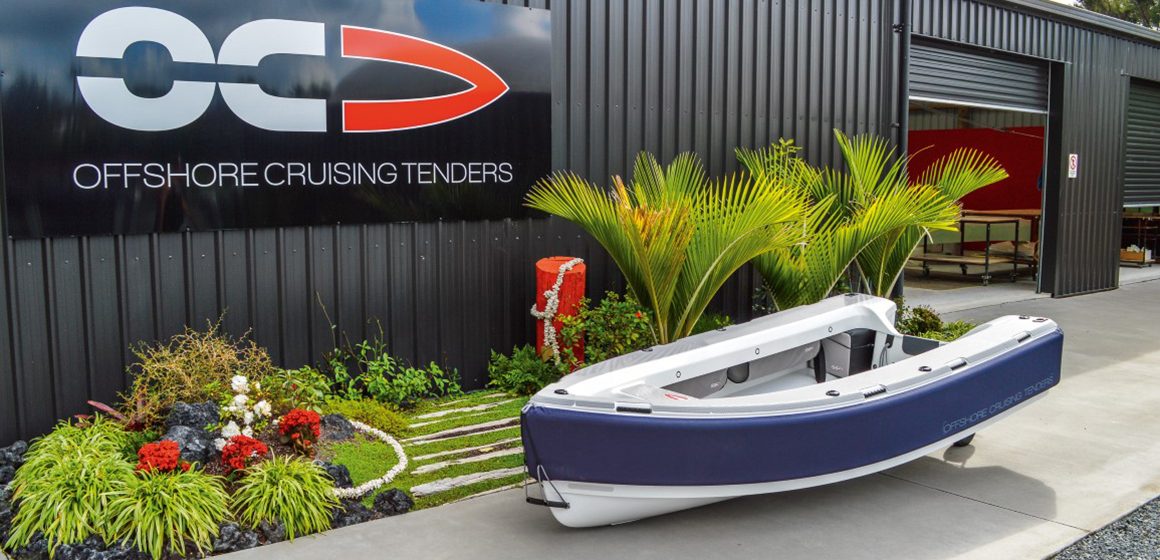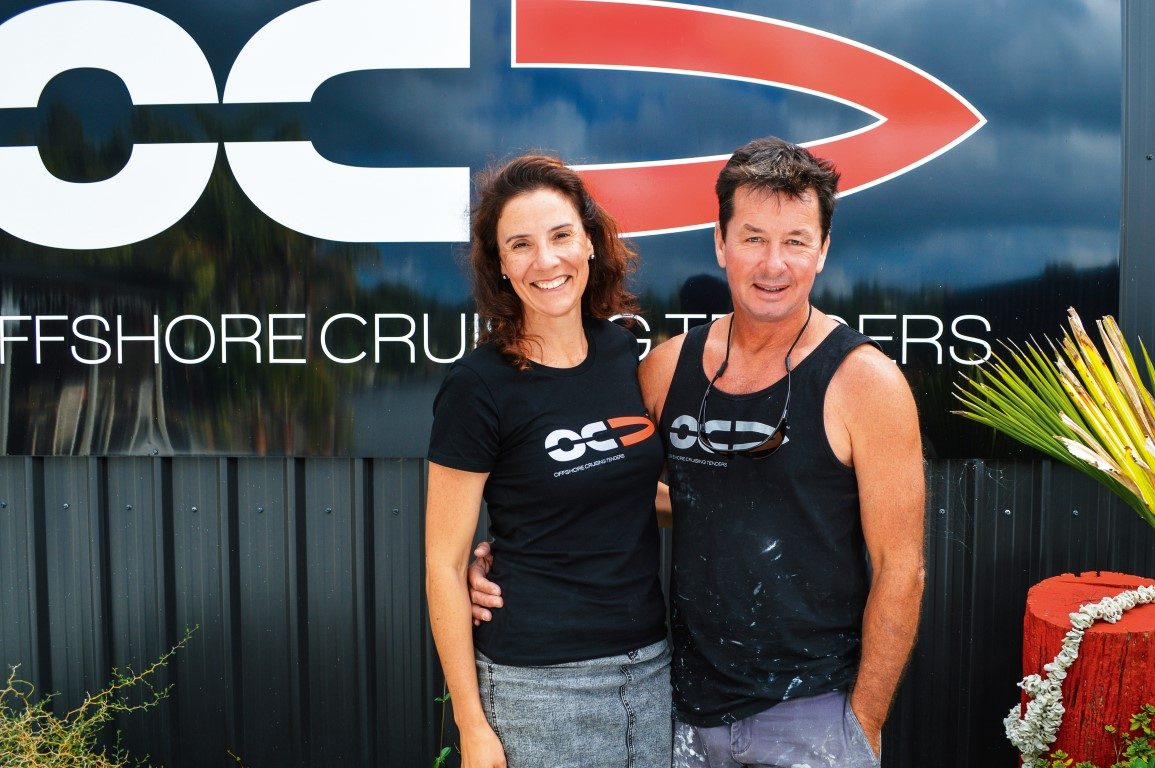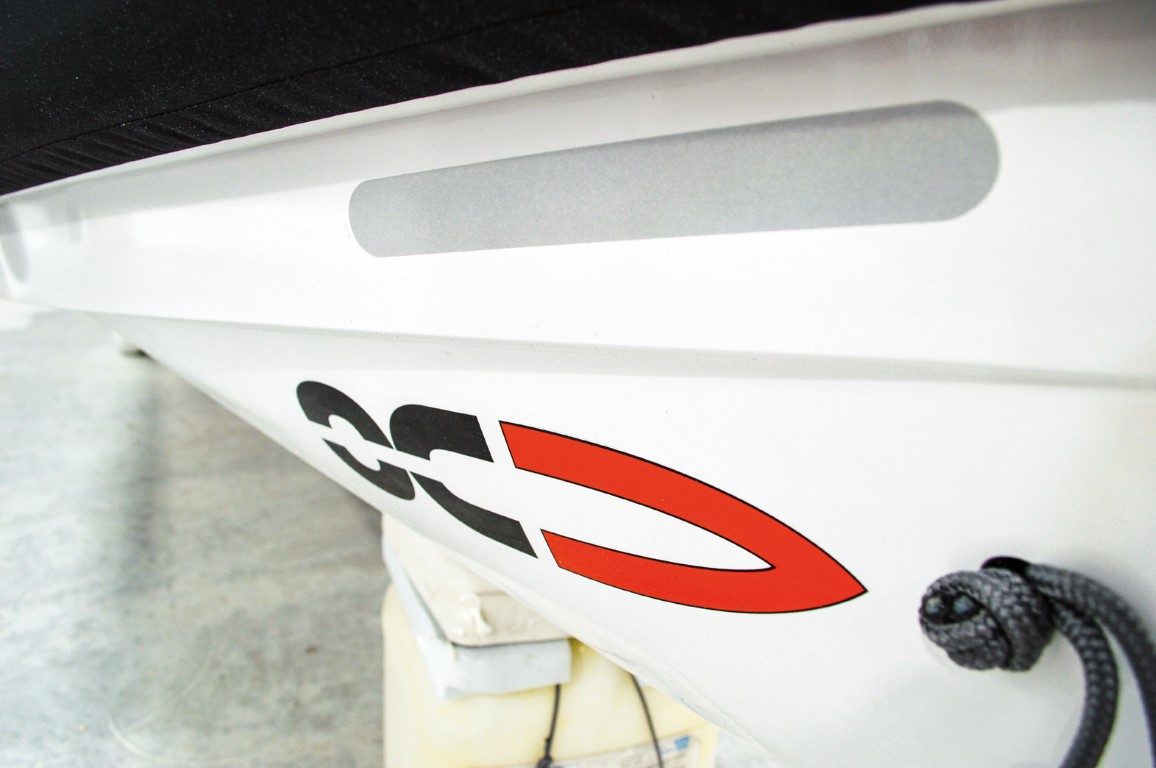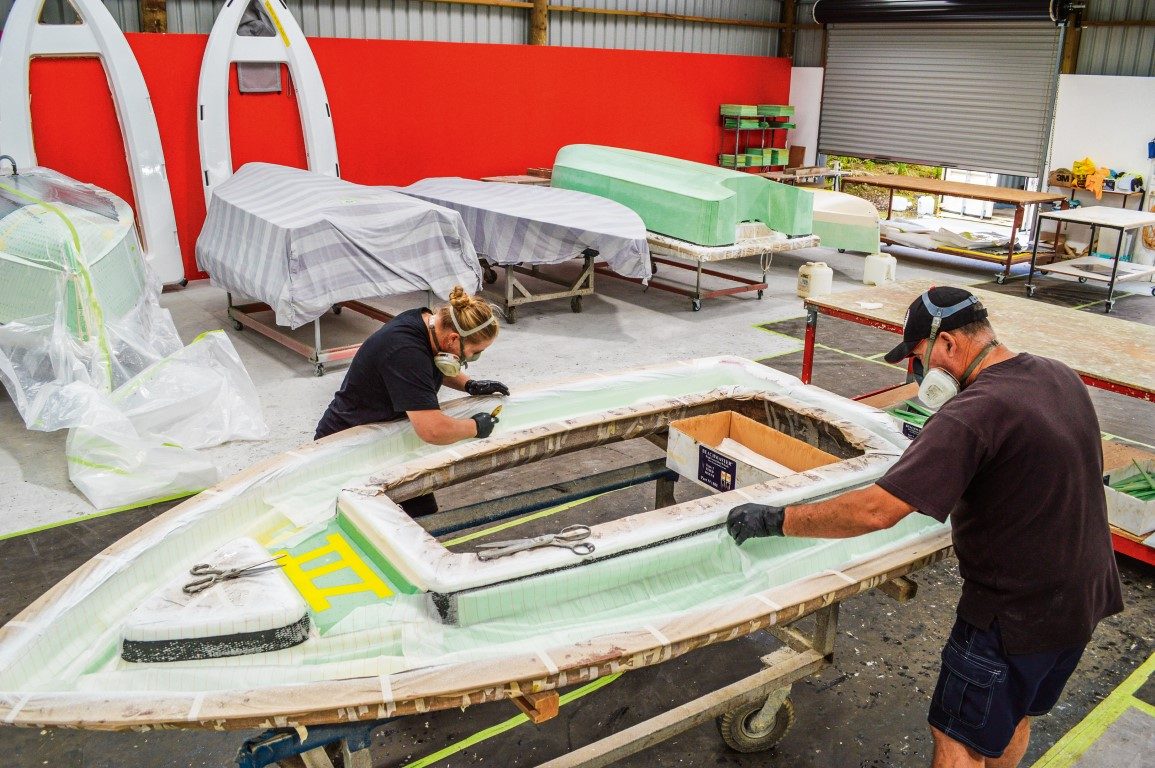

The old adage that you’ll find a healthy mind in a healthy body may have its equivalent in a boatbuilding environment – as the crew at Paihia’s Offshore Cruising Tenders factory seems to demonstrate, writes Matt Vance.
We have all been in them. Boatbuilders yards where the air is thick with sanding dust, epoxy vapour and the scream of grinders. They are places you tend to visit only when you have to. There are usually old hull moulds and piles of waste lying around and a smell that seems to dissolve your brain. At smoko, the glazed-eyed staff sits around with the white sheen of sanding dust all over them and a distinctly stoned look on their faces.

While there have been small steps forward over the years in this state of affairs, it has traditionally been considered a necessary evil that has been tolerated in order to produce world-class boats. I half-believed it, that was until I walked into Offshore Cruising Tenders’ new factory in Paihia, turned around and walked out thinking I had mistakenly strolled into a garden centre and then walked in again after checking the address twice on my phone.
The factory and, indeed the idea for a groundbreaking range of tenders, did not appear out of the mist. Rather, it has been based on solid experience backed up by hard work.
Russell and Karin Carlyon spent six years circumnavigating in their Malcolm Tennant-designed 12m catamaran Moonwalker. Their photo albums of the voyage read like a National Geographic photoshoot, but it was the knowledge gained from cruising and being around other cruisers that sparked the idea for the perfect cruising tender that was robust, dry and economical to run.

Upon their return to their home base of Paihia in the Bay of Islands Russell set out to consult with his former business partner and designer Kevin Trotter. Both Kevin and Russell had produced some innovative and world-class windsurfers in the 80s and 90s under the Styrotech label and it was this kind of thinking that formed the basis of Offshore Cruising Tenders.
Once the CAD model was complete, moulds for the original OC300 were CNC-machined and transferred to their factory in Paihia, Northland. That ‘factory in Paihia, Northland’ bit sounds fancy, but in reality, it was a tin shed, in the bush, out the back of a motel complex. There was walk-in access, a slightly clandestine ambience and bugger-all else.
While the shed was rough, the boats that were made there were a spectacularly well-polished idea. At peak production, they were able to turn out three boats a month from the shed which was fine while they established themselves on a marketing budget that was next to nonexistent.

Their market was the cruising community which is known to be well researched and educated in their purchases. They are also known for looking for ideas on other boats and yarning in rough waterside bars, which may explain how quickly the word-of-mouth marketing style ramped up demand.
The hunt for new premises was on and with a stroke of luck, an old truck yard with a shady past came onto the market. The Carlyons pounced on it and began a two-month transformation into a top-end boatbuilding facility.
A couple of derelict buildings were repurposed and a new 350m2 shed was constructed. The shed was fitted out with a sanding bay, fit-out bay and with a state-of-the-art double-filtered extraction system. A canvas work loft, showroom, a sail loft and administration building were added as were two 40ft containers full of a year’s worth of materials.
The environmental footprint is kept as small as possible with solar power to the shed, the recycling of peel ply and vacuum bags. Mixing vessels are procured from the local baked bean tin collection and the used punnets from Pahia’s many ice-cream shops. With these small steps the factory waste bin is emptied on a five-week rotation, which is a smaller waste footprint than most suburban houses.

Perhaps the most unusual feature and the reason for my initial confusion is the lush sub-tropical garden setting. The factory only takes a small proportion of the land and it seems most of it has been given over to a spectacular garden. Keeping it local and engaged with the community, the neighbour across the road (Marie) has designed and built the garden while her husband Tom constructs the shipping boxes and other miracles on request.
The physical expansion of Offshore Cruising Tenders has been fashioned under a simple but effective business model. Rapid organic growth does sound like the motto for a garden centre but is simply a business model which is based on self-funding and avoiding borrowing from banks or investors.
This means slower growth but more control over the process, product and most importantly the profit margin. This is part of the idea of vertical integration which involves being as close to the client and source of quality suppliers as possible.
On the other side of the equation, buyers buy directly with no middlemen and a dedicated group of associates help with bulk orders. These are Offshore Cruising Tenders owners and cruising folk who have the knowledge and skills to help deliver the products to more hands-off owners.

This simple and effective system allows the Offshore Cruising Tenders team to concentrate on building and delivering quality boats while having the R&D benefit of direct feedback from its customers.
With all six of the Offshore Cruising Tenders range now in production Russell and Karin have a team of 13 staff and contractors working for them. With five women in the team the testosterone levels are kept in check, but more unusual is the fact that most of the staff have not come from a boatbuilding background and have instead been picked for their variety of expertise and team fit over a particular technical experience.
The growth of the team has enabled the company to go from producing a meagre three boats a month in a tin shed to 12 boats, with an eye on 20 to keep up with the wall of global demand.
It is while we are discussing all this over a cup of tea that Karin takes leave of a battleship-style task of trying to track the shipping movements of boats that are in transit, to head to the garden to pick some spinach and strawberries for a nutritious smoothie.
Years ago I had tried through a language barrier to dissuade a Malaysian lady not to pick or eat the watercress growing near the backside of a rough boatyard I was working in. When language deserted us I tried vigorous sign language to indicate that might be hazardous to her health.
But here among the gardens and the tidy workshops of Offshore Cruising Tenders, you could have licked the nutritious smoothie from the carefully vacuumed shop floor.





